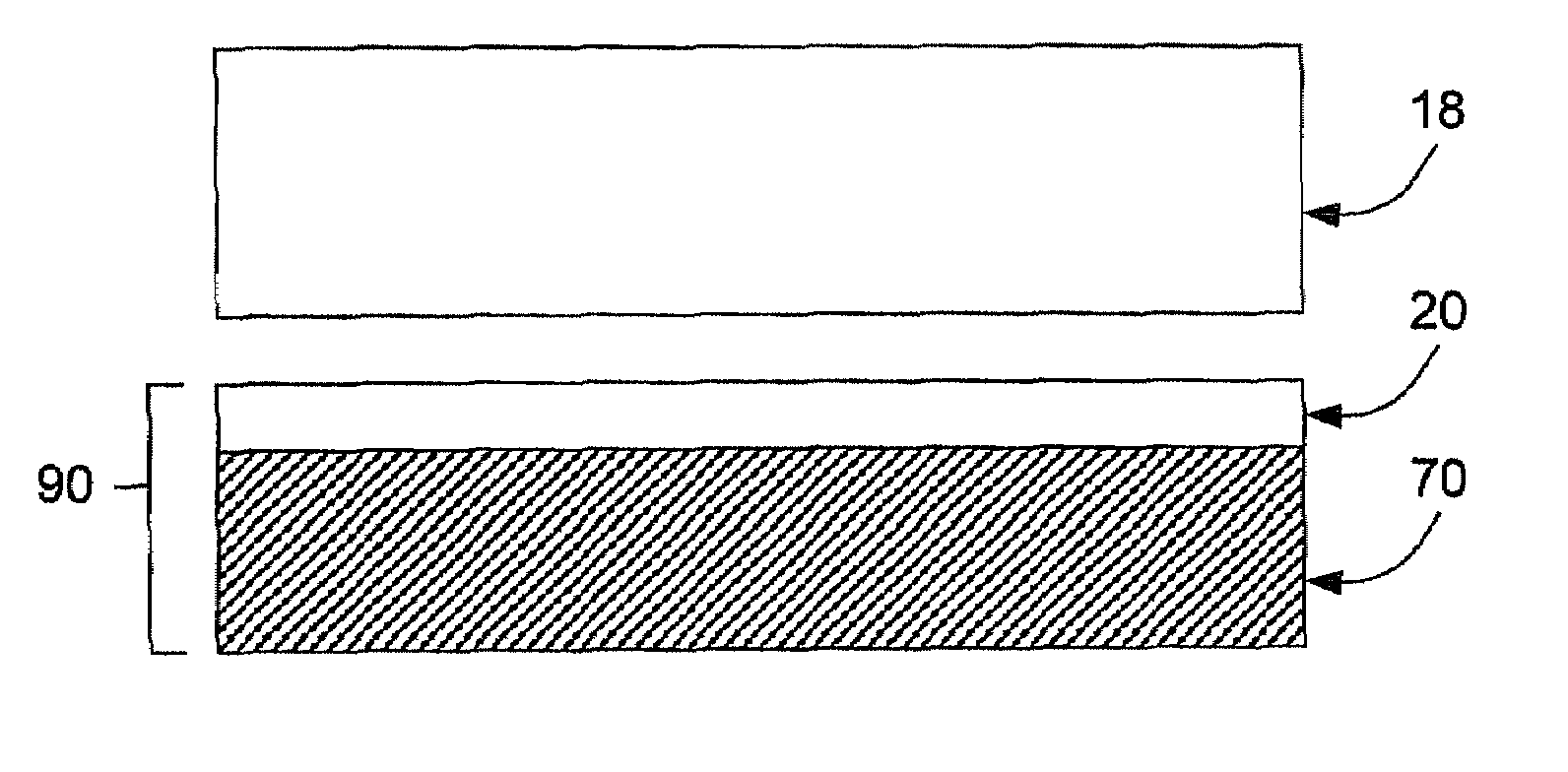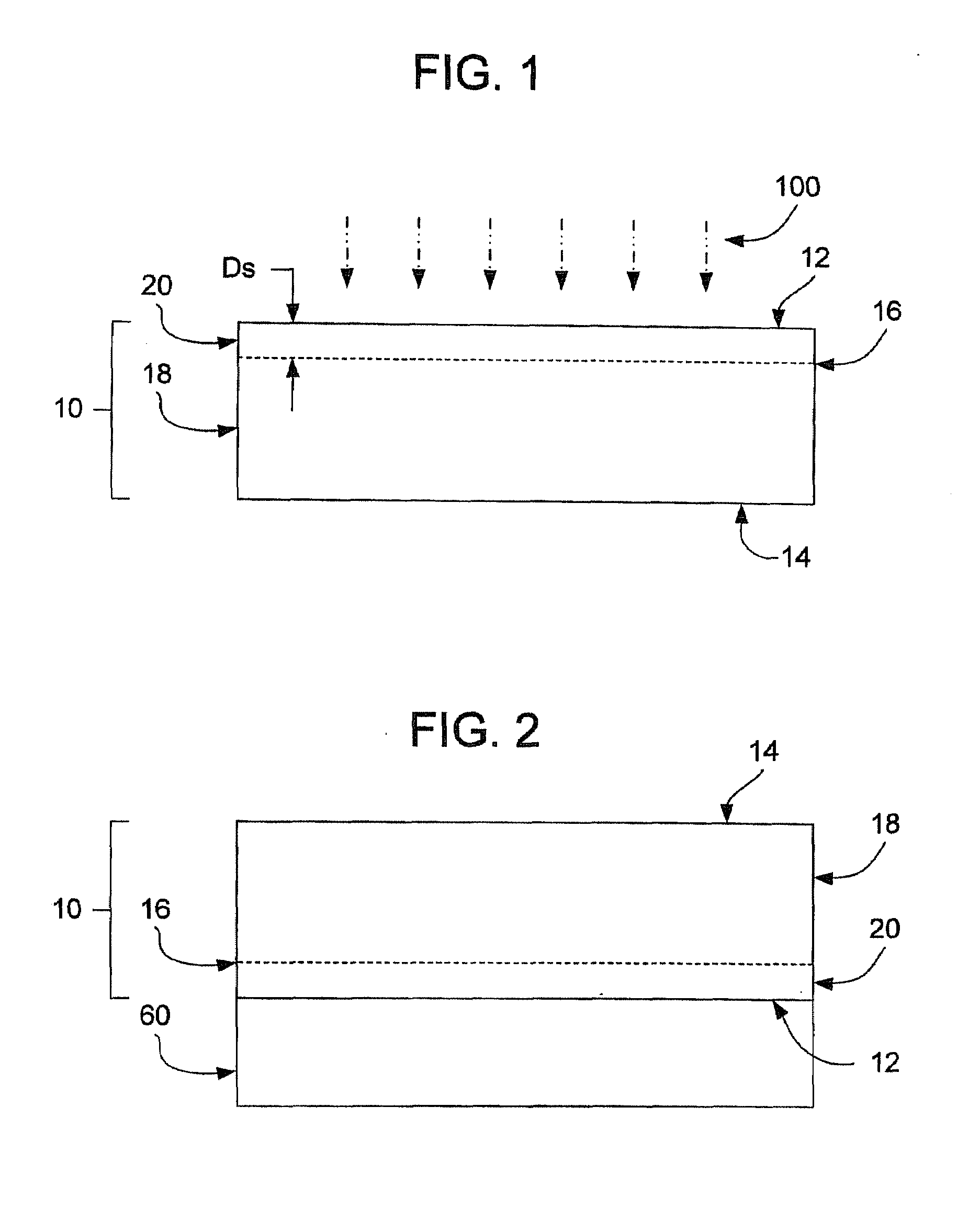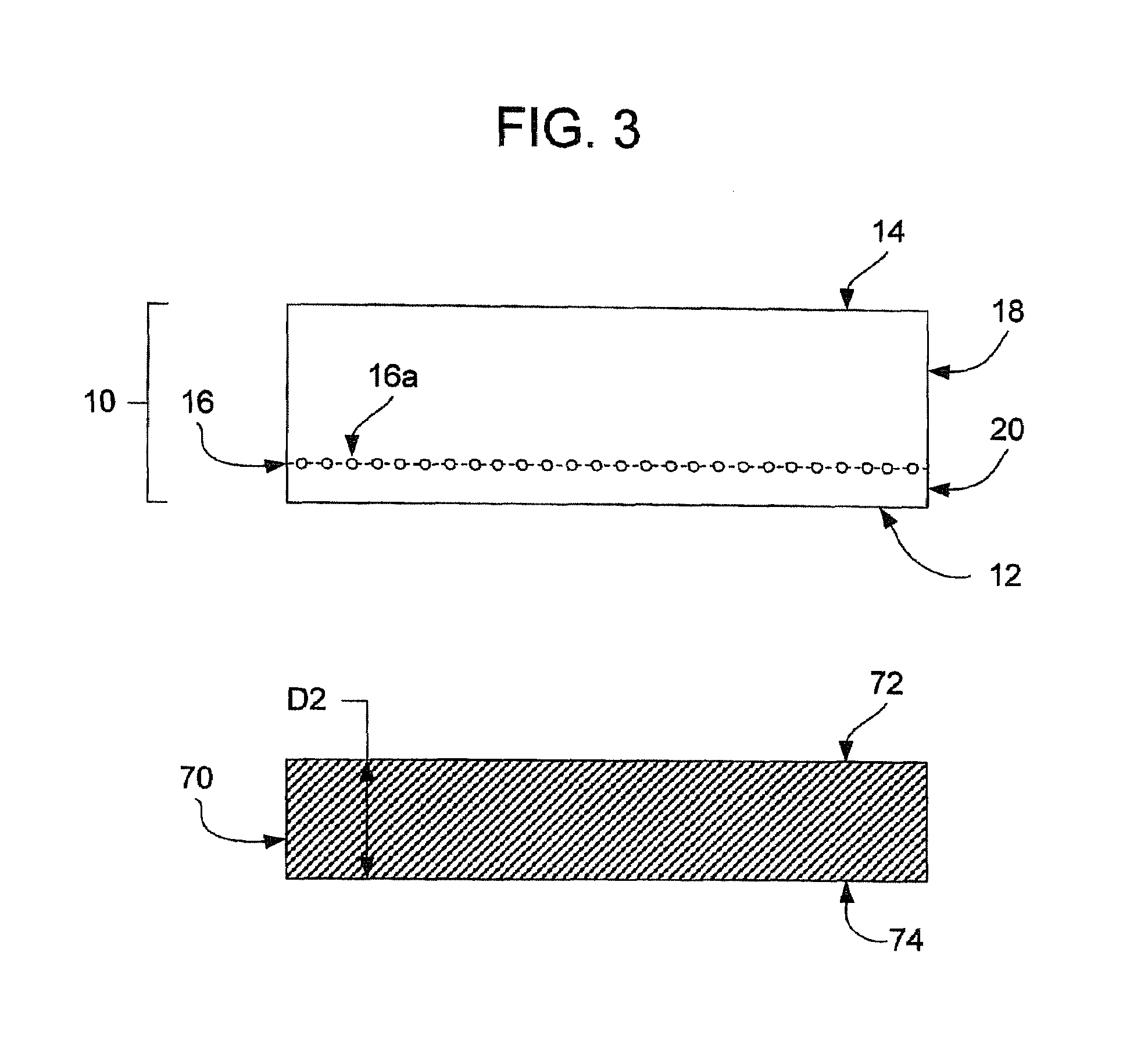Flexible display substrates
a display substrate and flexible technology, applied in the field of thin film semiconductors, can solve the problems of poor uniformity, high manufacturing cost, poor electrical characteristics of amorphous silicon films, etc., and achieve the effect of enhancing low-charge carrier mobility and being more resistant to breakag
- Summary
- Abstract
- Description
- Claims
- Application Information
AI Technical Summary
Benefits of technology
Problems solved by technology
Method used
Image
Examples
example 1
[0048]In this Example, an SCS film is transferred to a polymer substrate in accordance with the present invention. A boron-doped SCS wafer, with a resistivity of 1-10 ohm-cm and thickness of about 500 microns was hydrogen ion-implanted at 100 KeV and 8×1016 ions / cm2 dosage. The ion-implanted silicon wafer was heat-treated in air at 450° C. for about one hour on a smooth glass support and then allowed to cool to about room temperature. A polysulfone film with a thickness of about 1 millimeter was placed on a surface heated to about 225° C. and the film was allowed to heat to temperature. The cooled silicon wafer was carefully removed from the smooth glass support and placed on the heated polysulfone film, with the implanted side of the silicon wafer contacting the polysulfone film. A load of about 1 psi was placed on the silicon wafer and polysulfone film for about 30 minutes. The heat was turned off and the silicon wafer and polysulfone film were allowed to cool to about ambient tem...
example 2
[0050]For comparison, an attempt was made to transfer an SCS film to a polymer substrate without first heat-treating the ion-implanted silicon wafer on a smooth glass support. In this example, the silicon wafer was implanted as in Example 1. A polysulfone film with a thickness of about 1 millimeter was placed on a surface heated to 225° C. and allowed to heat up to temperature. The ion-implanted silicon wafer was placed on the polysulfone film with the implanted side of the silicon wafer contacting the polysulfone film. A small load of about 1 psi was placed on the silicon wafer and polysulfone film. The temperature was maintained at about 225° C. for about 30 minutes. The silicon wafer and polysulfone film were allowed to cool to about ambient temperature and the load was removed.
[0051]It was found that the silicon wafer and polysulfone film were very strongly bonded and difficult to separate. In forcing the samples apart, the silicon wafer broke, leaving chunks of the wafer bonded...
PUM
| Property | Measurement | Unit |
|---|---|---|
| temperature | aaaaa | aaaaa |
| temperature | aaaaa | aaaaa |
| temperature | aaaaa | aaaaa |
Abstract
Description
Claims
Application Information
 Login to View More
Login to View More - R&D
- Intellectual Property
- Life Sciences
- Materials
- Tech Scout
- Unparalleled Data Quality
- Higher Quality Content
- 60% Fewer Hallucinations
Browse by: Latest US Patents, China's latest patents, Technical Efficacy Thesaurus, Application Domain, Technology Topic, Popular Technical Reports.
© 2025 PatSnap. All rights reserved.Legal|Privacy policy|Modern Slavery Act Transparency Statement|Sitemap|About US| Contact US: help@patsnap.com



